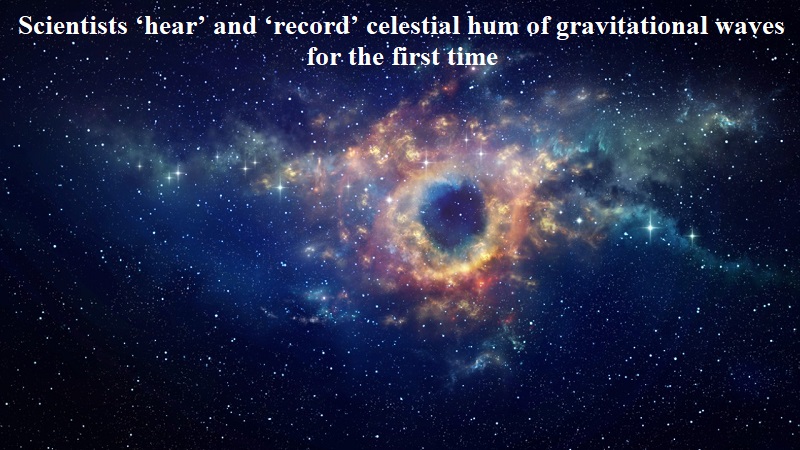
In a groundbreaking discovery, scientists have achieved a significant milestone by capturing the “sound” of gravitational waves generated by the slow merging of supermassive black holes. This momentous achievement was made by an international research consortium, including astrophysicists from India, who successfully recorded the powerful gravitational waves traversing through space-time.
The scientists responsible for this discovery are part of the North American Nanohertz Observatory for Gravitational Waves (NANOGrav), which has been closely studying pulsars, known as celestial metronomes. Pulsars are stars that serve as essential indicators for observing gravitational waves.
The existence of gravitational waves was first predicted by Albert Einstein a century ago, but it wasn’t until 2016 that the Laser Interferometer Gravitational-Wave Observatory (LIGO) in the United States detected the merger of black holes, providing definitive proof that space itself can be stretched and compressed. Prior to this groundbreaking observation, scientists had only found indirect evidence of gravitational waves since the 1970s.
The recent discovery of gravitational waves in 2023 is distinct from the 2016 observation. Back then, scientists only captured brief “chirps” of gravitational waves associated with mergers of black holes or neutron stars slightly larger than the sun.
Chiara Mingarelli, an astrophysicist and assistant professor at Yale University, described the new class of gravitational waves as resembling a choir, with pairs of supermassive black holes resonating at different frequencies. She also expressed surprise at the volume of the gravitational wave background, which was approximately twice as loud as anticipated.
The research heavily relied on pulsars, incredibly dense remnants of exploded stars that rotate rapidly like kitchen blenders. Nearly 70 pulsars were utilized in collecting the evidence. As gravitational waves pass through the galaxy, they cause stretching and squeezing of space-time, leading to variations in the arrival times of pulsar signals. This phenomenon enabled scientists to detect the gravitational waves.
The results of this research, comprising 15 years of data from NANOGrav, were published in ‘The Astrophysical Journal Letters.’ NANOGrav has been employing telescopes across North America to search for these elusive waves. This significant achievement provides a new perspective on observing the universe, marking a momentous breakthrough in our understanding of gravitational waves.

Post Your Comments